Table of Contents
Get Custom eCommerce Fulfillment Service
Book a Meeting
FBA Fees Explained 2025: Fulfillment, Storage & Hidden Costs
Time: Jul 16,2025 Author: SFC Source: www.sendfromchina.com
As Amazon continues to dominate the e-commerce landscape, understanding FBA fees in 2025 is no longer optional—it’s essential. In this post, we'll dive into the full breakdown of every fee you need to know, from fulfillment and storage to prep, returns, and the latest 2024–2025 updates. You’ll discover not just what you owe, but how to calculate your total costs and employ smart strategies to cut fees and protect your margins.By the end, you’ll have a clear roadmap to not only comprehend Amazon’s fee structure—but to proactively control it and enhance your profitability on the platform.
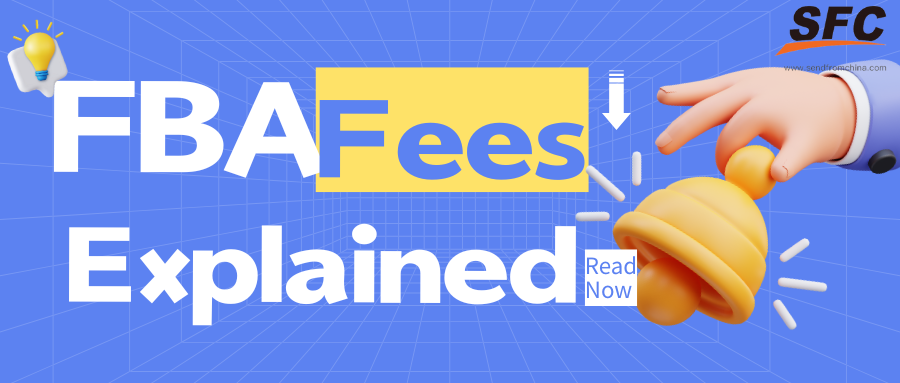
1. Overview of Amazon FBA Fees in 2025
Stepping into 2025, Amazon sellers are greeted with an unusual level of stability in FBA fee structures. After years of annual increases and the peak-season surcharges of 2023–2024, the marketplace giant has hit pause. Amazon officially confirmed there will be no U.S. referral or FBA fee hikes in 2025, and no brand‑new fee categories. Instead, to encourage inventory turnover and new selection, certain fees like inbound placement for bulky products have even been reduced. Amazon FBA fees are divided into multiple categories:Fulfillment Fees: Amazon charges fulfillment fee for each unit shipped, calculated by product size, weight, and category (such as standard, oversized, apparel, or dangerous goods). The cost includes order fulfillment (picking, packing, shipping), customer support, and potential peak holiday fees.
Storage Fees: Monthly storage fees are charged for keeping inventory in Amazon fulfillment centers, calculated per cubic foot (or cubic meter in Canada). Rates increase during peak season (October–December). Long-term storage (181+ days) incurs additional aged inventory surcharges.
Removal/Disposal Fees: Fees for removing or disposing of inventory from Amazon FBA, charged per unit based on size and weight.
Returns Processing Fees: Fees incurred when items are returned under Amazon's free return policy (or due to abnormally high return rates), helping recover processing fees.
Unplanned Service Fees (Prep and Labeling): Amazon charges per-unit fees when inventory arrives unprepared (missing labels, inadequate packaging, etc.). The fulfillment prep services are also available as optional paid services for sellers who prefer Amazon to handle labeling and preparation in advance.
Other New Fees (2024–2025): Amazon has introduced new fee structures to encourage better inventory management practices among sellers. These include three key charges: an Inventory Storage Utilization Surcharge for maintaining excessive unsold inventory, a Low-Inventory Level Fee applied when stock levels consistently fall below four weeks of supply, and an Inbound Inventory Placement Service Fee for sellers who opt to send all inventory to a single warehouse instead of distributing it across multiple fulfillment centers as recommended.
2. FBA Fulfillment Fees in the U.S. 2025
Navigating fulfillment fees in 2025 might seem straightforward—but there’s more to it than meets the eye. The section delves into the nuances that define U.S. FBA fulfillment costs this year.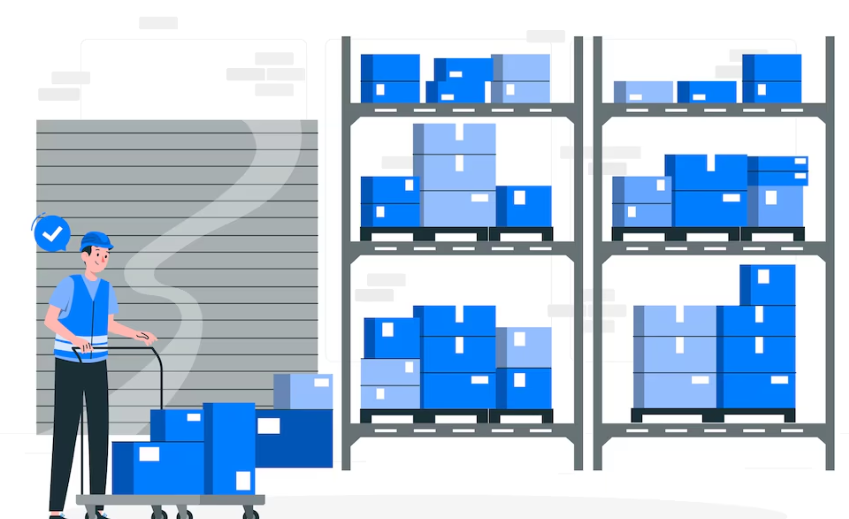
Defining Size Tiers & Billable Weight
Amazon classifies products into size tiers, each with distinct fee calculations:- Small Standard‑Size
Shipping weight ≤ 16 oz, dimensions ≤ 15″ × 12″ × 0.75″
- Large Standard‑Size
Shipping weight ≤ 20 lb, dimensions ≤ 18″ × 14″ × 8″
- Large Bulky / Oversize
Weight up to 50 lb, dimensions up to 59″ × 33″ × 33″ and length+girth ≤ 130″
Billable weight is determined by whichever is greater: actual weight or dimensional weight
2025 Non-Peak Fulfillment Fees
Amazon held U.S. non‑peak fulfillment fees steady from 2024 into 2025, ensuring predictability for sellers. Here’s the updated fee table:| Size Tier | Weight / Range | Fulfillment Fee |
|---|---|---|
| Small Std | 0–2 oz | $3.06 |
| 2–4 oz | $3.15 | |
| 4–6 oz | $3.24 | |
| 6–8 oz | $3.33 | |
| 8–10 oz | $3.43 | |
| 10–12 oz | $3.53 | |
| 12–14 oz | $3.60 | |
| 14–16 oz | $3.65 | |
| Large Std | ≤4 oz | $3.68 |
| 4–8 oz | $3.90 | |
| 8–12 oz | $4.15 | |
| 12–16 oz | $4.55 | |
| 1–1.25 lb (~16–20 oz) | $4.99 | |
| (Additional weight) | >3 lb | $0.32/lb |
| Oversize/Bulky | Defined by size limits | Higher rates |
These granular tiers reflect Amazon's 2024 update, aiming to align fees more closely with actual handling costs.
Peak Season Adjustments
From Oct 15 to Jan 14, Amazon applies a peak-season surcharge of $0.19–$0.29 per unit, depending on the SKU’s size/weight. Example: a 4 oz small standard item goes from $3.06 to ~$3.25. These adjustments should be factored into holiday season cost models.Oversize / Bulky Fee Breakdown
Oversize items incur significantly higher base fulfillment fees (often $10+), reflecting extra handling and transportation costs. While granular U.S. fee tables aren’t fully public, industry data suggests:- 10 lb oversize item: approx. $12–$15 per unit.
No official increases in 2025 have been announced.
Special Inbound Placement Incentives (Bulky)
Inbound placement refers to the cost of sending inventory to Amazon warehouses. In 2025:- Large bulky units secure a $0.58 average discount per unit on inbound placement (for minimal shipment splits), making it $1.10–$5.95 depending on size.
- New-parent ASINs under the FBA New Selection program (Dec 1, 2024–Mar 31, 2025) enjoy inbound-placement fee waivers for the first 100 units.
While these don’t affect outbound fulfillment fees, they significantly optimize early-stage bulk listings.
3. FBA Storage Fees
Maximizing profitability with FBA in 2025 means mastering the art of inventory management and understanding how storage fees are structured—and how to avoid unnecessary surge charges. Here's a breakdown of the key storage fees you’ll encounter.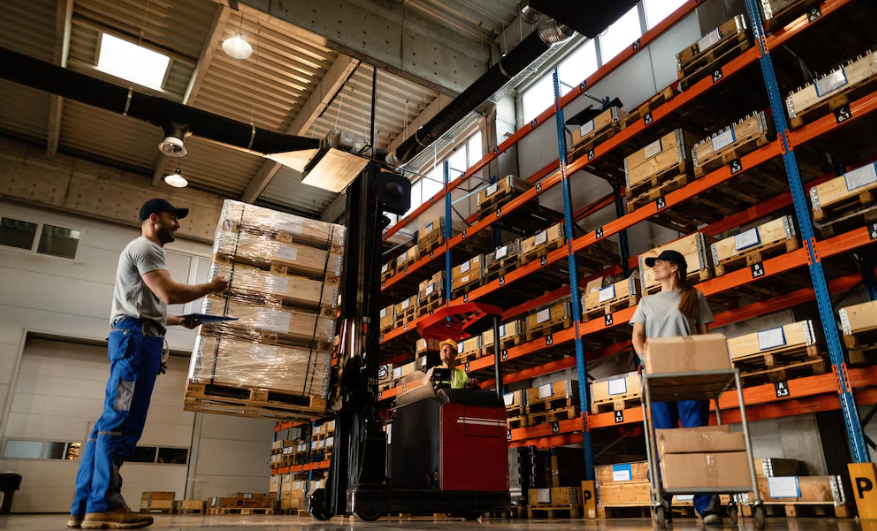
Monthly Storage Fees
Amazon charges a monthly fee for the amount of space your products occupy in their fulfillment centers. These storage rates vary depending on:- Product tier: Standard-size vs. oversized
- Seasonality: Off-peak (Jan–Sep) vs. peak (Oct–Dec)
According to a 2025 update, the rates are now:
- Standard-size items: $0.78 per cubic foot (Jan–Sep), surging to $2.40 per cubic foot during peak season (Oct–Dec).
- Oversized items: Start at approximately $9.73 plus $0.42 per pound, with fees increasing significantly for heavier items ($158+ plus $0.83/ lb for items over 90 lbs).
These seasonal rate increases reinforce the importance of right-sizing your inventory before Q4 to avoid hefty charges.
Long-Term Storage Fees & Aged Inventory Surcharges
Amazon penalizes slow-moving stock under its long-term storage fee policies:- 180-day threshold: Items stored beyond 180 days now trigger the aged inventory surcharge.
- 271–365 days: A new surcharge tier (effective Feb 1, 2025) adds extra fees for items aged between 271 and 365 days.
- 365+ days: Even steeper surcharges continue for products over one year old.
These faster triggers—moving from 365 down to 180 days—mean that inventory must flow or it will become expensive inventory.
Storage Utilization Surcharge
To discourage overstocking, Amazon introduced a storage utilization surcharge for items stored over 26 weeks.- The surcharge increases with time—at 44–52 weeks it's $1.58/cu ft; at 52+ weeks it reaches $1.88/cu ft.
- It's tied to seasonal system-wide utilization and seller IPI performance.
Sellers now need to manage carefully both over- and under-stocking.
Capacity Limits & IPI Pressure
Beyond fees, Amazon’s 2025 policy includes tighter warehouse capacity limits and inventory thresholds:- Inventory capacity is now capped at 5 months of forecasted sales during June–July (Prime Day prep included).
- Excess inventory may be rejected, even if no overage fees apply.
- Maintaining a strong Inventory Performance Index (IPI) of 400+ remains crucial to avoid capacity constraints.
4. Removal/Disposal Fees
Tackling overstock and unsellable items can save money—or cost you more depending on how you handle removal and disposal. Here's what sellers need to know about FBA removal and disposal fees in 2025.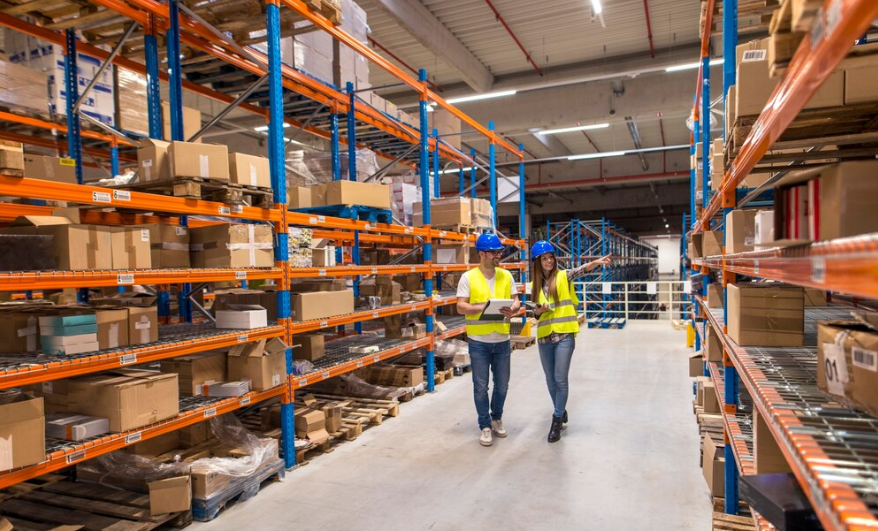
What Are Removal Fees and Disposal Fees
- Removal Orders: When you ask Amazon to return inventory to you (or a designated address), you’re charged a per-unit fee.- Disposal Orders: Amazon destroys the item on your behalf, incurring a lower per-unit charge.
Both services are essential tools for clearing aging or unsellable stock—but their costs can add up quickly.
Fee Increases in 2025
Amazon increased removal fees by approximately 20% in 2025 to discourage overstock and encourage efficient inventory management. That means if your removal cost last year was $2.50, expect around $3.00 per unit now. Disposal fees similarly rose, although at slightly lower rates in most categories.Typical 2025 Fee Ranges (U.S.)
| Item Tier | Removal Fee per Unit | Disposal Fee per Unit |
|---|---|---|
| Small standard | ~$3.00 — $3.50 | ~$1.00 - $1.50 |
| Large standard | ~$5.00 - $6.00 | ~$2.00 - $2.50 |
| Oversize / bulky | ~$8.00 — $12.00 | ~$4.00 - $6.00 |
These estimates reflect the ~20% increase on prior-year fees, and actual costs depend on item size and weight.
Why Amazon Made This Change
Amazon's intention behind raising fees is simple: to put pressure on slower-moving inventory and ensure fulfillment center space is used efficiently. As Amazon says, this pricing structure “helps drive more efficient use of our storage and create more capacity for sellers who are using space efficiently”.5. Returns Processing Fees
Returns are an inevitable part of e-commerce, and Amazon’s returns processing fees play a significant role in managing your FBA profit margins. In 2025, these fees have become more nuanced, affecting sellers in various high-return categories like electronics and furniture.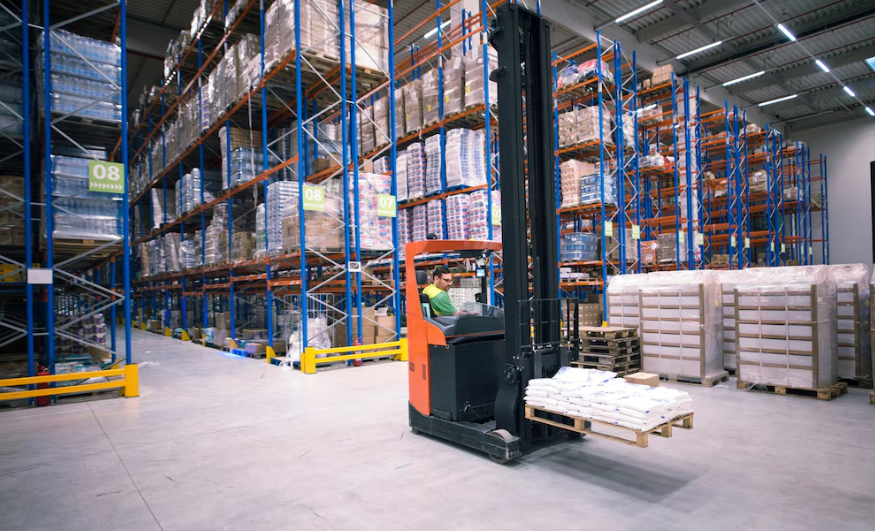
How Amazon Calculates Returns Fees
For most categories—excluding apparel and shoes—Amazon now charges a returns processing fee when the return rate for an ASIN exceeds a category-specific threshold. The fee applies per returned unit above the threshold and is calculated across a rolling 3-month period.For example, returns of products shipped in April are monitored through April, May, and June. If a product shipped 100 units and exceeds the set return rate (e.g., 10%), the fee applies to the excess returns.
Return Rate Thresholds & Exemptions
- Thresholds vary by category, based on historical industry return rates.- ASINs with fewer than 25 units shipped monthly are exempt, even if all returned.
- Returns within the FBA New Selection Program (new ASIN launches) also receive a waiver for the first 20 units exceeding the threshold.
Fee Amounts & Triggers
While Amazon does not publicly disclose exact fee-per-unit amounts, third-party insights show they can equal or exceed the original fulfillment fee, especially in high-return categories:- Categories like electronics and furniture may incur $2–$7+ per returned unit.
- If Amazon deems a returned item unsellable, it may also trigger disposal or liquidation costs, compounding the margin hit.
6. Unplanned Service Fees (Prep and Labeling)
Unplanned service fees can catch many sellers off guard, quickly eroding margins. These charges apply when FBA staff must prep or label products that arrive at the fulfillment center without meeting Amazon standards. Let’s break down what sellers need to know in 2025.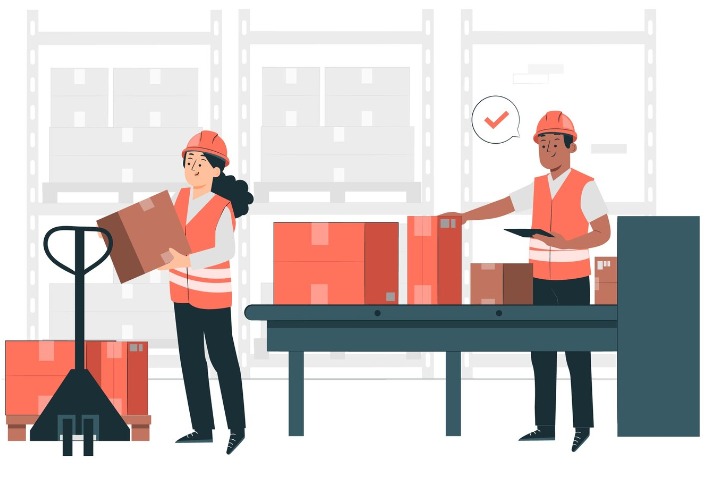
What Are Unplanned Service Fees?
Amazon defines unplanned service fees as the charges incurred when your shipment items lack necessary prep or labeling upon arrival—forcing staff to intervene. These services include:- Labeling (barcode application)
- Poly-bagging
- Bubble-wrapping
- Taping
- Kitting
These operations are billed at per-unit rates and can vary depending on the task and item size. If included in your FBA inbound plan, Amazon will automatically apply the required service and fee.
Why the Fees Are Rising in 2025
In 2025, reports show Amazon has increased these unplanned fees—particularly on labeling and prep of standard-size and oversize products—as a signal for sellers to improve package readiness . As more sellers miss FBA requirements, Amazon shifts the prep burden (and cost) back to them.Typical Fee Ranges (2025 U.S.)
Although Amazon doesn’t publish exact 2025 rates, third-party data reveals the following:| Service | Approx. Fee per Unit |
|---|---|
| Labeling (barcode) | $0.30 |
| Poly-bagging | $0.50-$1.00 |
| Bubble-wrap/Kitting | $1.00-$2.00+ |
Oversize or multi-component SKUs may incur higher fees. eComClips estimates additional prep fees for medium items can reach $2.00/unit, while SentryKit highlights that unplanned services are among the biggest hidden fee traps.
Common Triggers
Unplanned services are often triggered by:- Missing FNSKU labels
- Insufficient poly-bagging for items that require it
- Improper packaging, like open bags or unsecured closures
- Required prep not prepped per Amazon standards
- Boxing/kitting not completed as per inbound plan
Any deviation from Amazon’s prep requirements can incur these automated fees, which are billed later.
7. Other New Fees (2024–2025)
Between 2024 and 2025, Amazon introduced several new fee categories designed to reinforce balanced inventory and supply chain efficiency. Understanding these emerging costs ensures you stay ahead in your fee management game.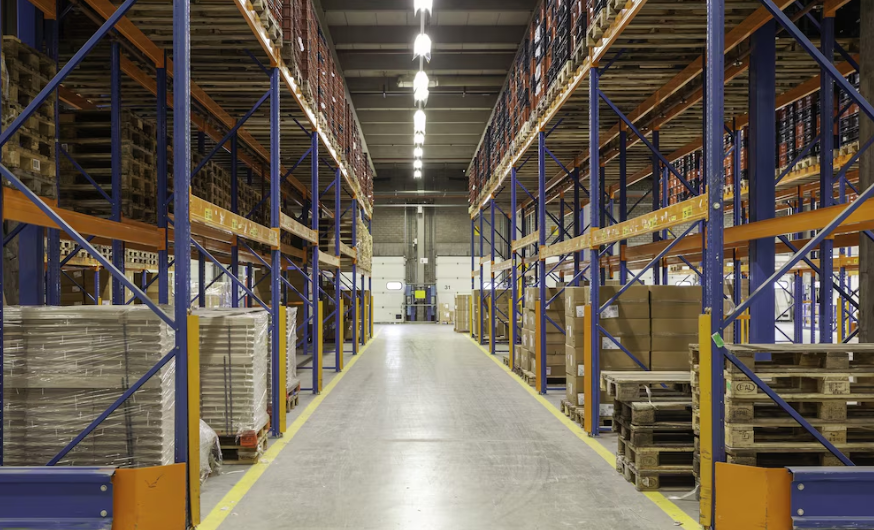
Low‑Inventory‑Level Fee
Encourages sellers to maintain at least 28 days of historical supply. If both 30- and 90-day average supply fall below this, Amazon imposes a small per-unit fee, applicable only to standard-size products.- Exemptions include:
New professional sellers (first 365 days)
New-to-FBA parent products (first 180 days)
SKUs auto-replenished via Amazon Warehousing & Distribution (AWD)
Impact: Fees range from about $0.32 to $1.11 per unit depending on size/weight tier and supply gap.
Dimensional‑Weight Pricing Adjustments
Amazon has expanded the use of dimensional weight for certain bulky or irregularly shaped items. Billable weight now may rely on size rather than actual weight, affecting both fulfillment and storage fees.Seller Tip: Optimize packaging “cube” size to stay within cheaper weight tiers.
AWD & Overflow Handling Rates
(“Amazon Warehousing & Distribution”) allows overflow inventory to live off-site with replenishment support for FBA.- Through Mar 31, 2025: sellers could choose between Base vs. Integrated inbound rates.
- Effective Apr 1, 2025: Amazon rolled out Smart Storage and Amazon Managed rate tiers, rewarding auto-replenishment usage and performance compliance.
- Storage rate remains $0.38/cu ft monthly—competitive versus peak FBA rates.
Reimbursement Caps (Lost & Damaged)
As of Mar 10, 2025, Amazon capped reimbursements for lost or damaged inventory at the item’s manufacturing cost (or $2,000 cap), no longer reimbursing retail price.Action: Maintain detailed Cost of Goods Sold (COGS) documentation for smoother claims.
8. How to Calculate FBA Fees
To effectively manage your Amazon business in 2025, you need a clear method to calculate FBA fees. Here's a breakdown of the process—step-by-step—and how to use both Amazon’s and third-party tools accurately.
Key Components of FBA Fees
A typical FBA fee per unit consists of:- Referral Fee (percentage of sale price, usually 8–15%)
- Fulfillment Fee (based on size tier & weight; includes pick & pack)
- Monthly Storage Fee (based on cubic feet & seasonality)
- Long-Term Storage Fee (if over 180 days)
- Returns Processing Fee (if return rates exceed thresholds)
- Removal/Disposal Fee (if you choose to clear inventory)
- Unplanned Service Fees (labeling/prep if non-compliant)
- Other Surcharges (e.g. low inventory, utilization, inbound)
Step-by-Step Example Calculation
Scenario: You sell a small standard-sized item (4 oz, 6″×4″×2″) for $20, stored for 2 months, with no returns.- Referral Fee: 15% × $20 = $3.00
- Fulfillment Fee: Standard small (4–6 oz) = $3.24
- Monthly Storage: ~0.05 cu ft × $0.78 × 2 months = $0.08
- Long-Term Fee: Not applicable (<180 days)
- Returns Fee: $0 (assuming low returns)
- Removal Fee: $0 (no removal)
- Unplanned Service: $0 (properly prepped)
Total Estimated FBA Fee = $3.00 + $3.24 + $0.08 = $6.32
Net Margin (before COGS) = $20 – $6.32 = $13.68
Adjust based on return activity, inventory age, or unexpected fees.
Using Amazon’s FBA Revenue Calculator
Amazon’s Revenue Calculator (available in Seller Central and publicly) allows you to test scenarios by inputting:- Marketplace
- Selling price, dimensions, weight
- COGS and shipping cost
Calculating Storage & Aged Surcharges
When your inventory remains in FBA:- Monthly Storage = (cu ft × rate × months)
- Long-Term Fee: Triggered after 180 days (apply additional aged fee)
- Utilization Surcharge: If stored >26 weeks, based on cube usage ($1.58–$1.88/cu ft)
Tools like AMZ Prep calculator forecast these charges to prevent surprises.
Factoring in Returns, Removals & Unplanned Services
- Returns Fee: Apply only if return rates breach category thresholds — calculate the excess return count × fee/unit.- Removal Fee: Estimate removal/disposal cost per unit for aged or unsellable inventory.
- Unplanned Service Fees: Labeling, poly-bagging, or kit prep typically $0.30–$2.00+ per unit.
Include these as conditional line items depending on your operations and inventory prep practices.
9. Tips to Reduce FBA Fees
Reducing FBA fees isn’t just about cost-cutting—it’s about optimizing operations to protect your margins. Here are the best strategies to keep more of your profits in 2025: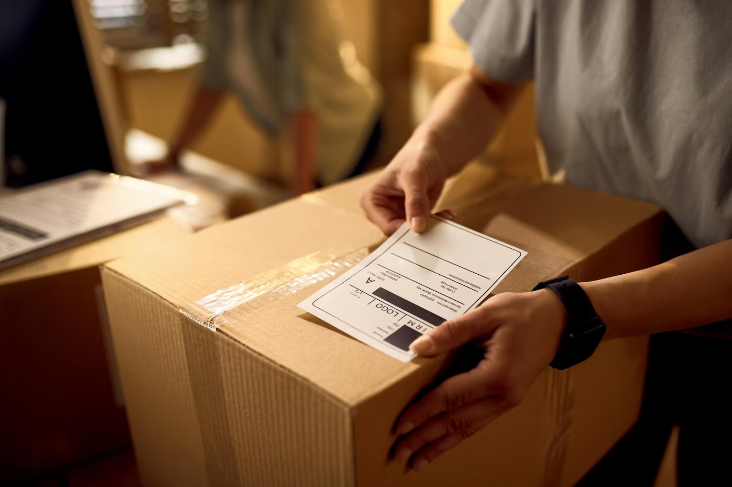
Optimize Package Size & Weight
- Right-size packaging: Even minimal reduction in a box’s dimensions (1–2 cm) can shift your item to a cheaper FBA tier—such as from Large Standard to Small Standard—saving $1+ per unit.- Use lightweight yet protective materials like polybags or air pillows. Efficient packing reduces dimensional weight and long-term storage fees.
Bundle Products Smartly
- Create value bundles—group related items to reduce fulfillment fees per unit and boost average order value. For instance, selling a combo instead of individual items cuts multiple fulfillment charges into one.Maintain Healthy Inventory Levels
- Keep a 60–90 day supply to avoid low-inventory-level fees and to prevent long-term storage surcharges after 180 days.- Use Amazon’s IPI score as a beacon—aim to exceed 400 to avoid capacity restrictions and surcharges.
Use Amazon Programs & Seasonal Planning
- Small & Light program: Enroll qualifying items (<$10, <12 oz) to enjoy $2.16 fulfillment fees—significantly cheaper than standard FBA.- New ASIN waivers: Leverage 100-unit inbound placement fee waivers for new products launched Dec–Mar.
- Plan shipments during off-peak to avoid inflated seasonal storage fees (peak season charges can surge by 300%).
Prep & Label in Advance
- Avoid unplanned service fees (labeling, poly-bagging) by prepping items in-house or via compliant 3PL partners.- Conduct quality-control checks before shipments to ensure all units meet Amazon’s standards and bypass FBA’s automated prep services.
Clear Slow-Moving Stock
- Regularly audit inventory and remove aged SKUs before hitting 180-day thresholds to dodge long-term surcharges.- Consider batch removals or 3PL liquidation over paying high removal fees ($3–$12 per unit).
Leverage Data & Automation Tools
- Use calculators from Amazon or third-party tools (AMZPrep, Sage Calculator, SuperFuel) to model fees across fulfillment, storage, returns, and surcharges.- Tools like SellerLabs Restock App, SentryKit, or Link My Books can detect hidden fees and optimize inventory/products automatically.
Monitor & Manage Returns
- Improve listing quality and packaging in high-return categories to lower return rates and avoid processing fees ($2–$7/unit).- Use new selection waivers or low-volume exemptions when launching products to buffer early-stage returns.
10. Conclusion
2025 marks a rare period of fee stability in the FBA landscape: no across‑board increases, fewer surprises—and a few strategic reductions. That said, Amazon remains nimble with revenue triggers: more aggressive long-term storage charges, utilization/low-stock surcharges, buildup of prep fees, and refined fulfillment policies. Sellers who proactively manage packaging, prep, inventory health, and fee‑benefiting programs—like new‑ASIN waivers—will be ahead of the curve. Bottom line? With careful planning and nimble tools, FBA remains a powerful channel. Just don't treat static fulfillment fees as permission to neglect your operations.11. FAQs
Q1: Will FBA fees definitely stay flat for all of 2025?
A1: Yes—Amazon has formally stated they will not increase U.S. referral or FBA fees through 2025, nor introduce new fee types.Q2: When do long‑term storage fees begin?
A2: Long‑term storage fees now kick in after 180 days, down from 270 days in previous years.Q3: How much can I save with inbound placement discounts?
A3: For large bulky items, placement fees are reduced by ~$0.58/unit starting Jan 15, 2025—and first 100 units for new ASINs inbounded Dec 1–Mar 31 are waived.Q4: Can I avoid prep fees entirely?
A4: Yes—prep costs can be eliminated if you label and prep products yourself or via a 3PL before shipping to Amazon.Q5: What exactly is the low‑inventory‑level fee?
A5: Introduced in April 2024, sellers holding fewer than ~28 days of forecasted inventory incur a small per-unit fee—encourage balanced stock levels. Post Views:5087
Post Views:5087
Copyright statement: The copyright of this article belongs to the original author. Please indicate the source for reprinting.
Previous Post
Next Post
Cloud WMS Explained: What Is Cloud‑Based Warehouse Management Software?
TAGS
Hot Research
Recent News
- Third Party Logistics Definition, Process, and Advantages
- What Is Ecommerce Fulfillment? The Definition, Process, and Benefits
- Where Does Shein Ship From
- What Is End-to-End Fulfillment and How Does It Work for Cross-Border Ecommerce?
- How to Reduce Cross-Border Shipping Costs When Sourcing from China
Get Custom eCommerce Fulfillment Service
Book a Meeting
Get a Custom China Fulfillment Solution with FREE Storage for 30 Days
 Want to know about our services, fees or receive a custom quote?
Want to know about our services, fees or receive a custom quote?
 Please fill out the form on the right and we will get back to you within a business day.
Please fill out the form on the right and we will get back to you within a business day.
 The more information you provide, the better our initial response
will be.
The more information you provide, the better our initial response
will be.





 TAGS:
TAGS: